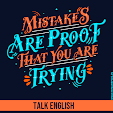Simple Tense Article
The straightforward present is an action
word tense with two primary employments. We utilize the straightforward current
state when an activity is occurring at this moment, or when it happens
routinely (or endlessly, which is the reason it's occasionally called present
uncertain). Contingent upon the individual, the basic current state is framed
by utilizing the root shape or by adding ‑s or ‑es as far as possible.
20 sentences in simple present tense
20 sentences in simple present tense
Example:
I feel
extraordinary! Pauline cherishes pie. I'm sorry to learn that you're wiped out.
Example:
The other is to
discuss ongoing activities or events.
Pauline practices
the piano consistently. Ms. Jackson goes amid the late spring. Hamsters run
throughout the night.
Form the Simple Present
In the simple present, most
regular verbs use the root form, except in the third-person singular (which
ends in -s).
- First-person singular: I write
- Second-person singular: You write
- Third-person singular: He/she/it writes (note the ‑s)
- First-person plural: We write
- Second-person plural: You write
- Third-person plural: They write
For a few verbs, the
third-person singular ends with -es instead of -s.
Typically, these are verbs whose root form ends in o, ch, sh, th, ss,
gh, or z.
- First-person singular: I go
- Second-person singular: You go
- Third-person singular: He/she/it goes (note the ‑es)
- First-person plural: We go
- Second-person plural: You go
- Third-person plural: They go
For most regular verbs, you
put the negation of the verb before the verb, e.g. “She won’t go” or “I don’t
smell anything.”
The verb to be is
irregular:
- First-person singular: I am
- Second-person singular: You are
- Third-person singular: He/she/it is
- First-person plural: We are
- Second-person plural: You are
- Third-person plural: They are





0 comments: